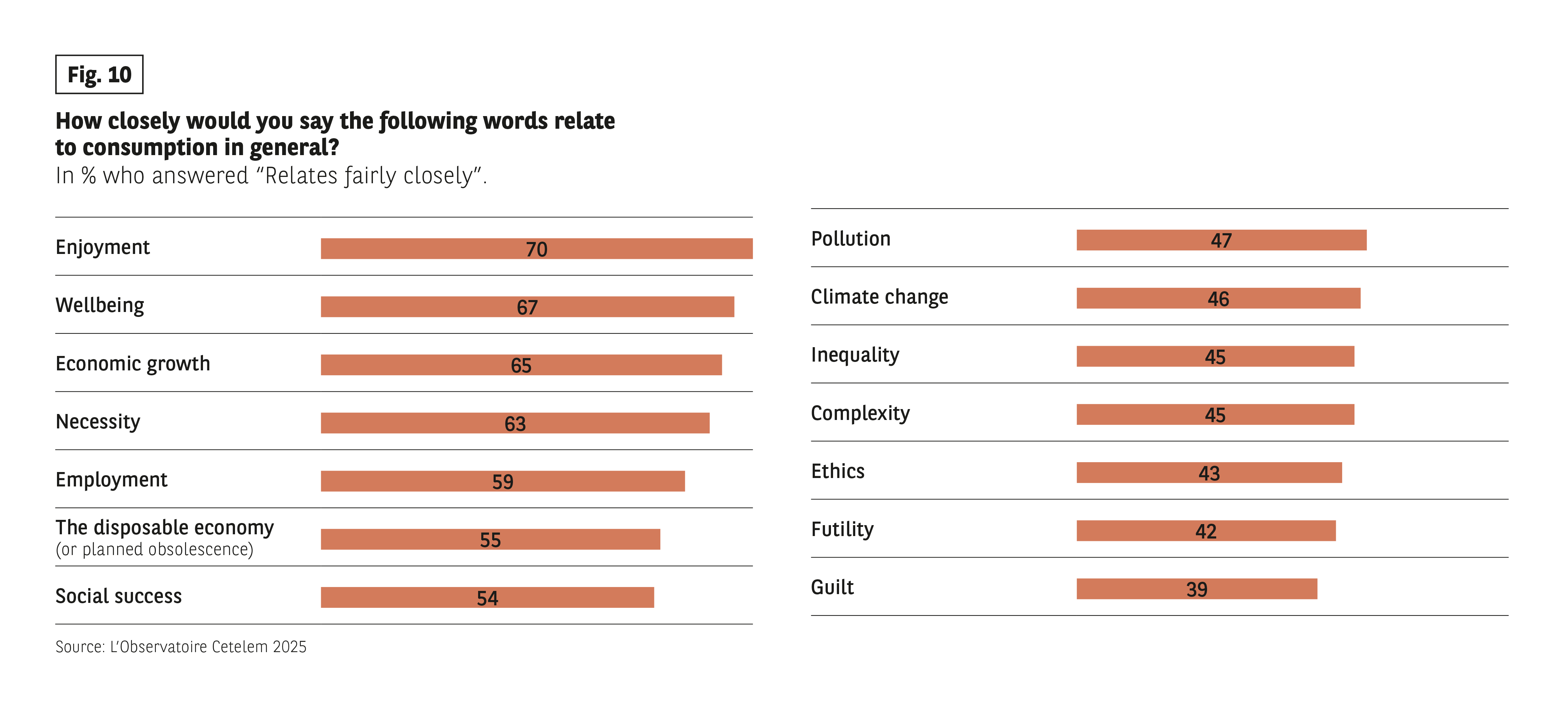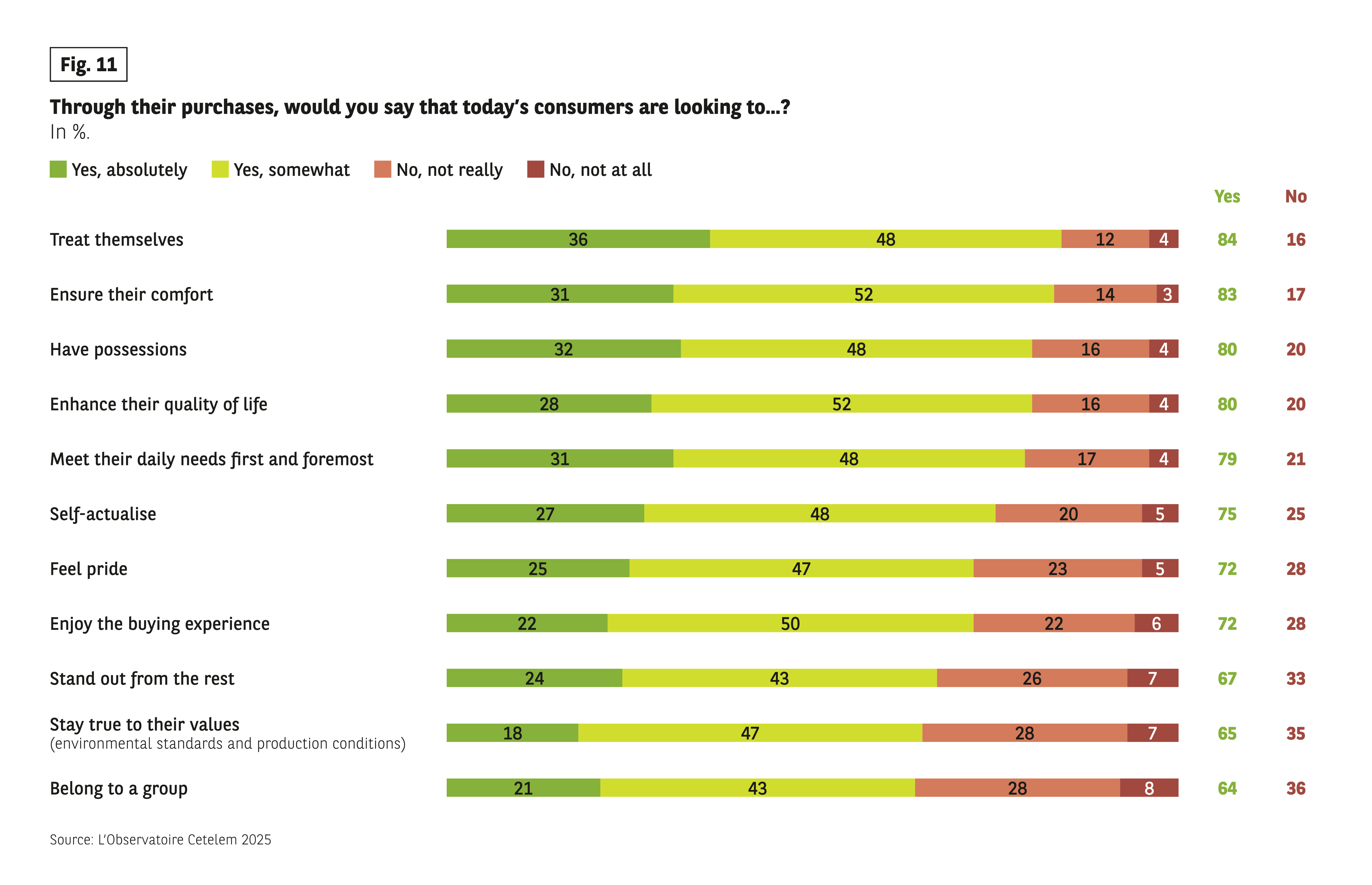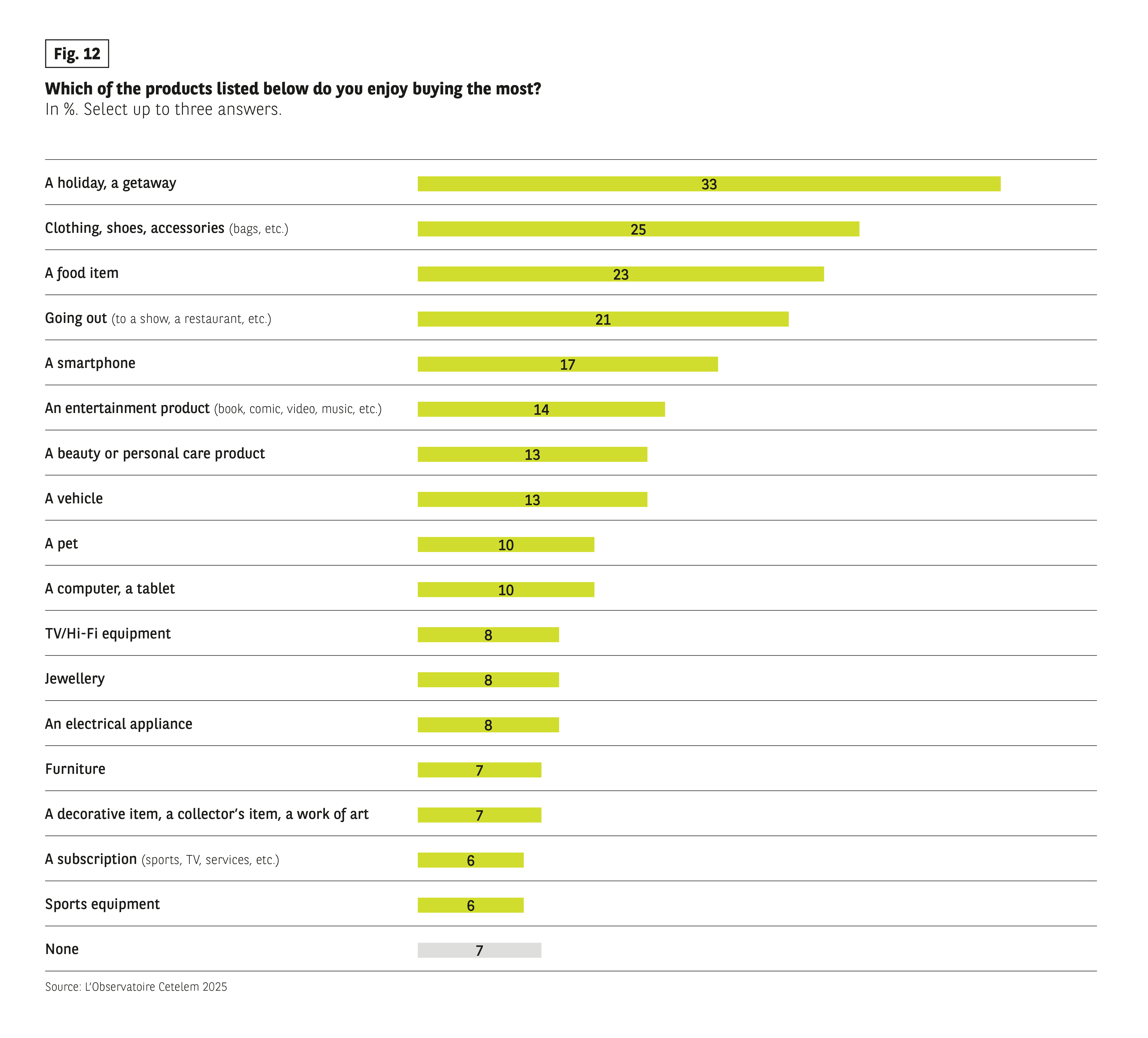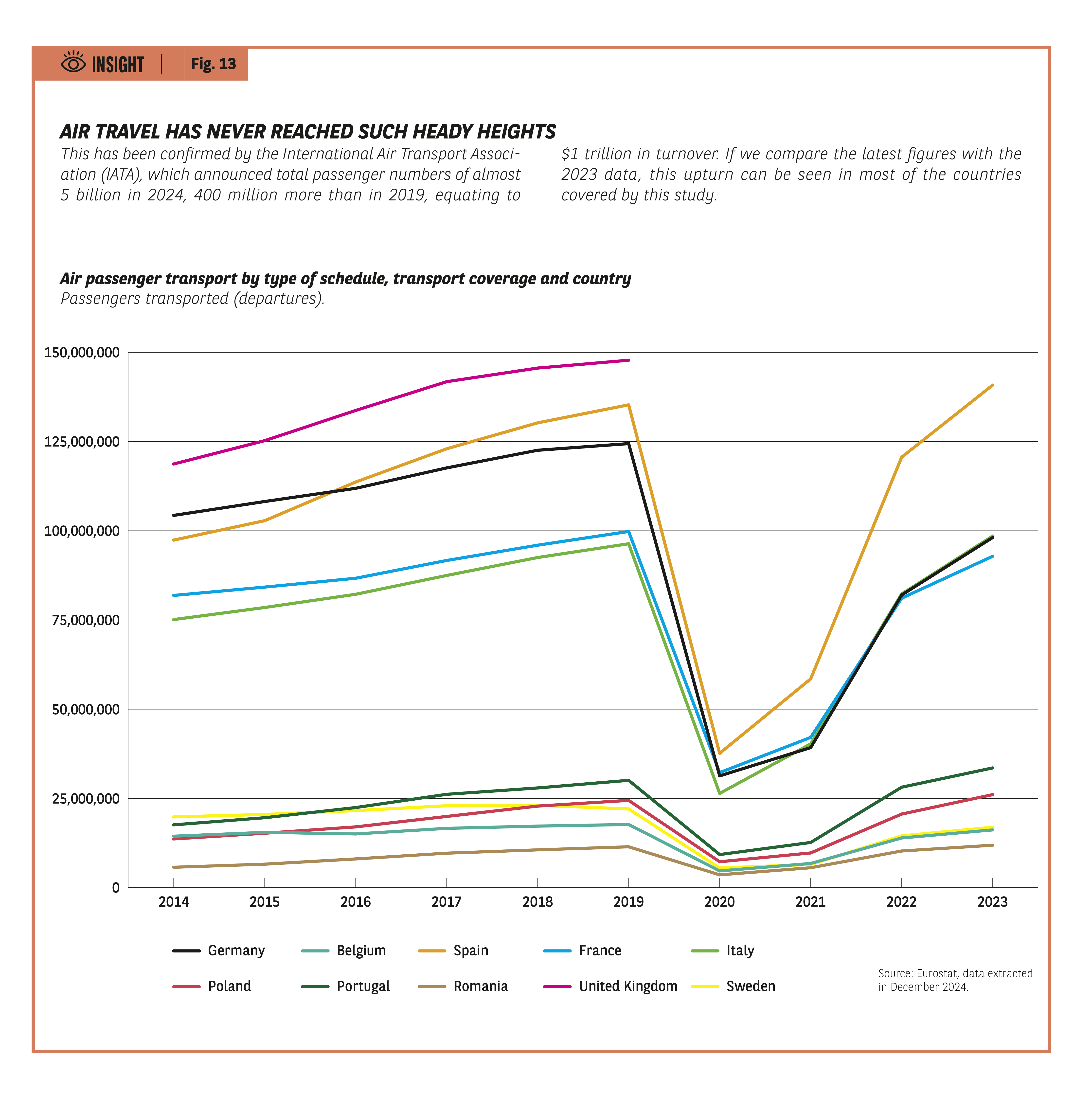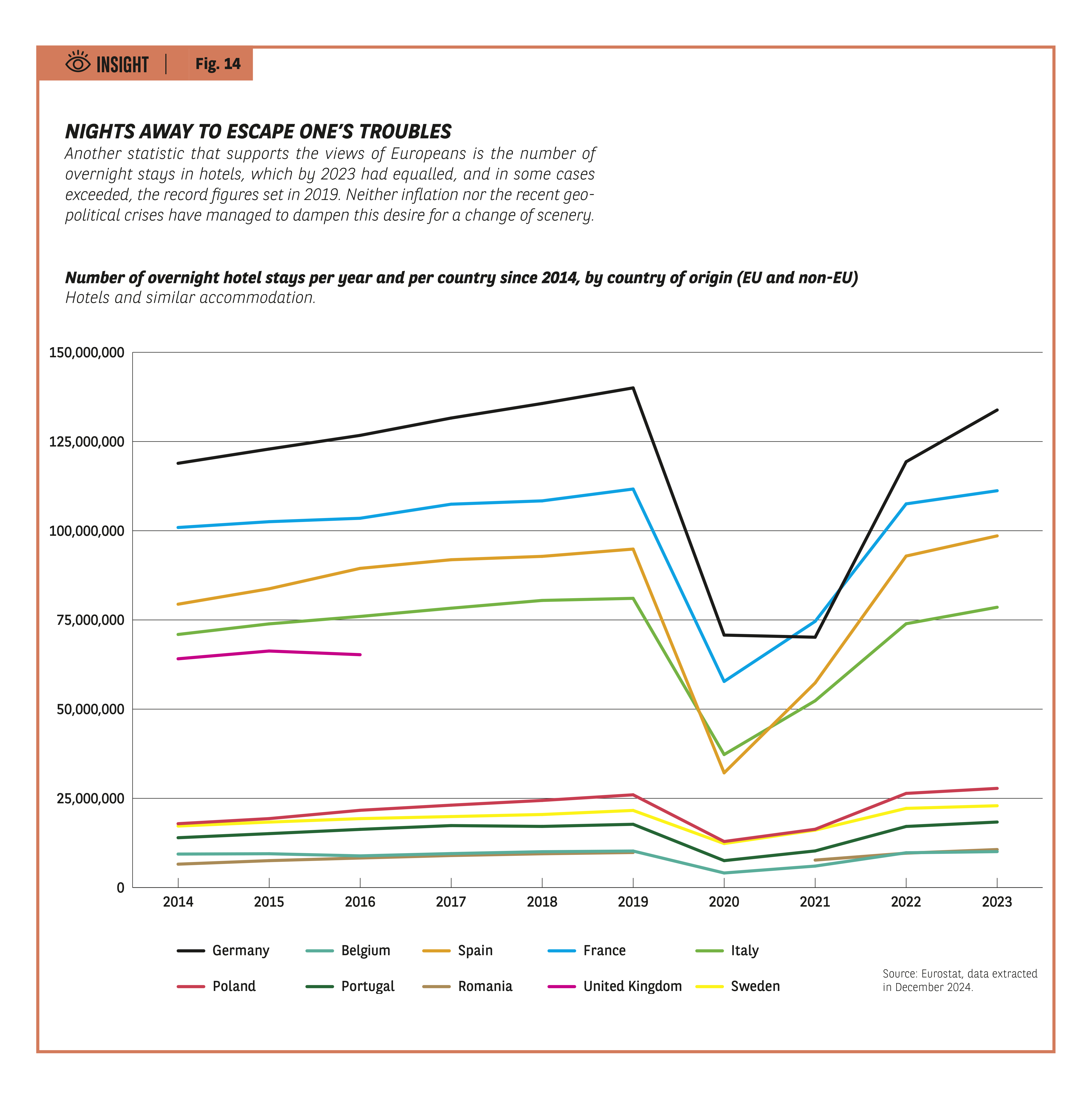Unashamed enjoyment
THINKING OF ONESELF
Could European consumers be described as two-faced or lacking in self-awareness? Are they flagrantly contradicting themselves? One might be inclined to think so, considering the terms in which they describe their overall perception of consumption today, with “wastage” topping the list, and those they associate with consumption in general.
Judging from the two most popular terms, “enjoyment” and “wellbeing”, 7 out of 10 people see consumption as a positive that makes them “feel good”, regardless of their income or social status. As we shall see in part three, this positivity seems to coincide with a gradual shift towards non-material purchases, with various services, leisure activities and music/ video streaming platforms having become firmly established by the end of the Covid crisis. When it comes to enjoyment, the British top the ranking, albeit with a relatively conservativescore of 61%, while the Portuguese and French are the least likely to consider any notion of wellbeing (Fig. 10).
Not far behind in the list of terms highlighted by Europeans are economic growth, necessity and employment, underlining their belief that consumption has a more functional purpose. These macro-oriented perspectives balance out the more micro-centric concerns that top the list. One should also note that all the terms relating to the environment can be found mid-way down the ranking.
ENJOYABLY PERSONAL REASONS
If we delve deeper into what really motivates Europeans when they make a purchase, we discover that hedonistic thinking is still the leading driver. The desire to treat oneself and enjoy greater comfort occupy the top two spots, having been cited by more than 8 out of 10 Europeans. The appeal of ownership and maintaining one’s quality of life score almost as highly, with the former topping the ranking in Romania, the UK and Italy, and the latter in Poland. Self-actualisation is another objective pursued through consumerism, but to a somewhat lesser degree (Fig. 11).
CONSUMING AT ONE’S LEISURE
How does this desire to treat oneself translate? First and foremost, it means escaping from the day to day. A third of Europeans choose primarily to travel or to treat themselves to a getaway. However, the responses provided paint a fairly mixed picture, with the Swedes and Italians (44% and 42%) being very keen on the idea, while the Poles and Romanians (24% and 25%) are happier to stay at home.
While clothing and food occupy the next two positions, reflecting the primacy of “necessary” consumption, the desire to go out, buy a smartphone or purchase an entertainment product reflects a fondness for “fun” purchases (Fig. 12).
KEY DATA
- 7 out of 10 Europeans believe that consumption has increased over the last years
- 4 out of 10 feel that their own consumption has increased
- 8 out of 10 believe they are in control of the key expense items
- 8 out of 10 take pride in managing their budget effectively
- 7 out of 10 associate consumption with enjoyment and wellbeing

